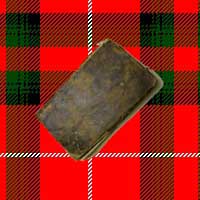
home
Thomas Wainewright's case is evidence that murder by poisoning is not solely reserved for infamous leaders and widows. From his good upbringing, few would have guessed that the man who would become a famous writer and artist would later become a notorious murderer as well. Taken in by his grandfather, Dr. Ralph Griffiths, who was the editor of the Monthly Review, London's first literary magazine, and after his death in 1803 brought up by his uncle George Edward Griffiths, Wainewright was surrounded by the arts from the start. It was through his uncle that Wainewright was ushered into the art and literary circles of London. He became friends with Wordsworth, Blake and Dickens, painted pieces that apparently were worth exhibiting at the Royal Art Academy, and developed a talent for art criticism. He wrote regularly for journals and magazines, and became a popular figure at dinner parties. If this sounds like too good a life to be true, well, it was. Because of his extravagant lifestyle, Wainewright soon found himself deep in debt. And, like many, he succumbed to temptation. After his marriage to Frances Ward, Wainewright went into the dubious business of forgery to deal with his money problems, but of course this only brought him worse financial difficulties. And then suddenly people started dying. The first was his uncle George, who had been persuaded to let the Wainewrights lodge at his house. The house went to Wainewright, of course. Almost immediately after he'd invited his mother-in-law and two sisters-in-law to live with his family, Wainewright had one of the girls, Helen, insured by five different companies. His mother-in-law, who'd objected to his attempts to increase the said insurance to £5,000, died from a mysterious painful illness, thus clearing the way for Wainewright to increase Helen's insurance to £20,000. Not surprisingly, Helen followed her mother to the grave four days before Christmas of 1830. Unfortunately for Wainewright, the insurance company smelled a rat and refused to cough up the money. While Wainewright initially took legal action against them, speculations of these mysterious deaths were beginning to take their toll upon his reputation. He vanished to France, where he spent five years in the company of a fellow lodger who mysteriously died of a painful illness and left £3,000 of insurance money to Wainewright. While it was never proved, it was hypothesized that Helen's illness had been brought about by antimony poisoning, causing her to exhibit symptoms such as vomiting and nausea. At the same time, a relatively indigestible meal was served to provide a reason for her illness. The final blow was struck with the administration of strychnine, concealed in sweet sticky jam. She might have been told that the bitter strychnine powder was an all-purpose remedy. Experts point out that the convulsions described in all three deaths are consistent with poisoning by strychnine, which would have been easy to procure during this time. Furthermore, Wainewright apparently had several books on poisons in his library, and would have been well-informed on the subject. Upon his return to England, he was promptly arrested, not for the murders, which could not be proved due to insufficient evidence, but for the forgery he'd committed ten years earlier to gain access to his full inheritance. He was tossed into Newgate Prison, and later transported to Tasmania where he spent the rest of his life working in a chain gang, doing community service and painting portraits of the local dignitaries and their families. He was the subject of Oscar Wilde's "Pen, Pencil, and Poison". This copy is based on the first version of August 1889, in Fortnightly Review. A revised version was published in Intentions, May 1891. |